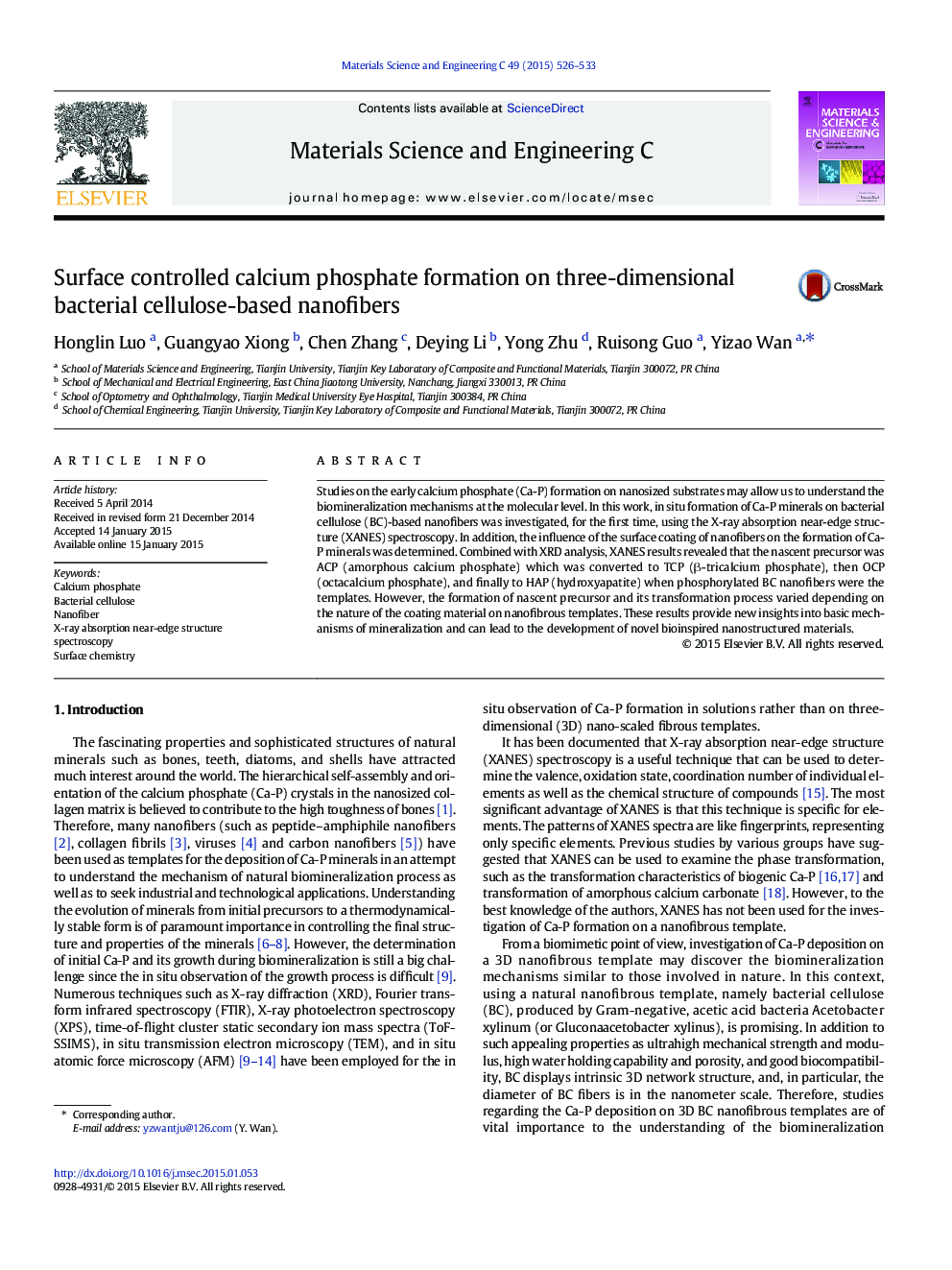| Article ID | Journal | Published Year | Pages | File Type |
|---|---|---|---|---|
| 1428208 | Materials Science and Engineering: C | 2015 | 8 Pages |
•Formation of Ca-Ps on BC-based nanofibers was investigated by XANES spectroscopy.•The nascent Ca-P deposited on BC was ACP that was converted to TCP, OCP, and HAP.•Surface nature of nanofibers has an effect on the precursors and their transitions.•XANES spectroscopy is an effective tool of studying the formation of Ca-P minerals.
Studies on the early calcium phosphate (Ca-P) formation on nanosized substrates may allow us to understand the biomineralization mechanisms at the molecular level. In this work, in situ formation of Ca-P minerals on bacterial cellulose (BC)-based nanofibers was investigated, for the first time, using the X-ray absorption near-edge structure (XANES) spectroscopy. In addition, the influence of the surface coating of nanofibers on the formation of Ca-P minerals was determined. Combined with XRD analysis, XANES results revealed that the nascent precursor was ACP (amorphous calcium phosphate) which was converted to TCP (β-tricalcium phosphate), then OCP (octacalcium phosphate), and finally to HAP (hydroxyapatite) when phosphorylated BC nanofibers were the templates. However, the formation of nascent precursor and its transformation process varied depending on the nature of the coating material on nanofibrous templates. These results provide new insights into basic mechanisms of mineralization and can lead to the development of novel bioinspired nanostructured materials.
Graphical abstractFigure optionsDownload full-size imageDownload as PowerPoint slide
